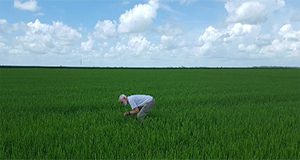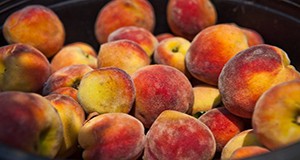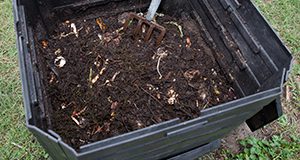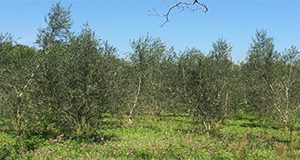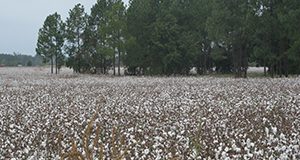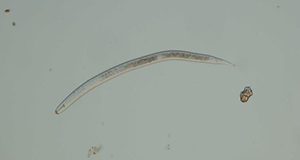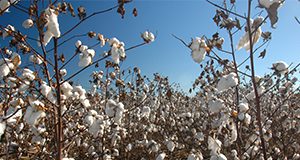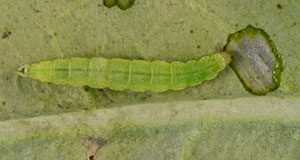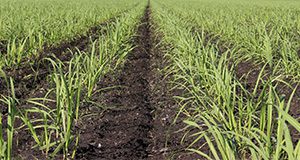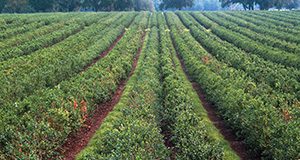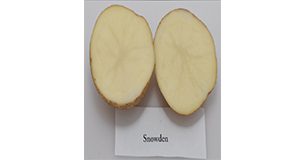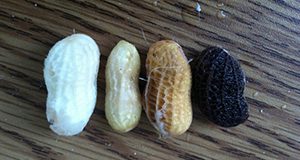The rice water weevil, Lissorhoptrus oryzophilus Kuschel, is the most widely distributed and destructive pest of rice in the United States. This 4-page fact sheet written by Matthew T. VanWeelden and Ron Cherry and published by the Department of Entomology and Nematology provides a description of the rice water weevil, its distribution in the state of Florida, methodology for scouting, and options for managing this pest in commercial rice fields.
http://edis.ifas.ufl.edu/in1167
Category: Crops
Establishment and Production Costs for Peach Orchards in Florida: Enterprise Budget and Profitability Analysis
While the Florida peach industry is small, it has experienced significant growth in recent years. This 20-page article written by Ariel Singerman, Marina Burani-Arouca, and Mercy Olmstead and published by the Food and Resource Economics Department summarizes the establishment and production costs as well as the potential profitability of a peach orchard in Florida. It includes an enterprise budget, estimates of potential revenue and undiscounted cash flows for different combinations of prices and yields, and an investment analysis. The information in this article should be relevant to both current and potential Florida peach growers.
http://edis.ifas.ufl.edu/fe1016
Eight New Potato Variety Trials Spotlights
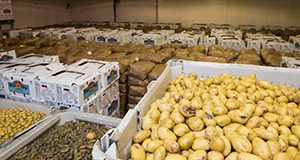
The following eight new potato variety trials spotlights explain the results of the trials and describe the different cultivars. They are published by the Horticultural Sciences Department.
-
HS1293 University of Florida Potato Variety Trials Spotlight: ‘Adirondack Blue’ by Rodrick Z. Mwatuwa, Christian T. Christensen, Pam Solano, and Lincoln Zotarelli
http://edis.ifas.ufl.edu/hs1293 -
HS1294 University of Florida Potato Variety Trials Spotlight: ‘Fabula’ by Rodrick Z. Mwatuwa, Chrsitian T. Christensen, Pam Solano, and Lincoln Zotarellia
http://edis.ifas.ufl.edu/hs1294 -
HS1295 University of Florida Potato Variety Trials Spotlight: ‘Peter Wilcox’ by Rodrick Z. Mwatuwa, Christian T. Christensen, Pam Solano, Kathleen G. Haynes, and Lincoln Zotarelli
http://edis.ifas.ufl.edu/hs1295 -
HS1296 University of Florida Potato Variety Trials Spotlight: ‘Yukon Gold’ by Rodrick Z. Mwatuwa, Christian T. Christensen, Pam Solano, and Lincoln Zotarelli
http://edis.ifas.ufl.edu/hs1296 -
HS1297 University of Florida Potato Variety Trials Spotlight: ‘LaChipper’ by Rodrick Z. Mwatuwa, Christian T. Christensen, Pam Solano, and Lincoln Zotarelli
http://edis.ifas.ufl.edu/hs1297 -
HS1298 University of Florida Potato Variety Trials Spotlight: ‘Harley Blackwell’ by Rodrick Z. Mwatuwa, Christian T. Christensen, Pam Solano, Kathleen G. Haynes, and Lincoln Zotarelli
http://edis.ifas.ufl.edu/hs1298 - HS1299 University of Florida Potato Variety Trial Spotlight: ‘Goldrush’ by Rodrick Z. Mwatuwa, Christian T. Christensen, Pam Solano, and Lincoln Zotarelli http://edis.ifas.ufl.edu/hs1299
-
HS1300 University of Florida Potato Variety Trials Spotlight: ‘French Fingerling’ by Rodrick Z. Mwatuwa, Christian T. Christensen, Pam Solano, and Lincoln Zotarelli
http://edis.ifas.ufl.edu/hs1300
Herbicide Residues in Manure, Compost, or Hay
When purchasing compost, it is important to understand that some manure-based products can contain herbicide residues that can affect the growth of certain plants. Manure from animals that have been fed forage treated with aminopyralid or other closely related herbicides, such as clopyralid or picloram, can be contaminated with these herbicides, which severely restrict the growth of legume and solanaceous crops and other broadleaf plants. This 3-page fact sheet discusses aminopyralid, compost, questions to ask when purchasing bulk compost or mulch, conducting a bioassay, aminopyralid injury symptoms, and steps to consider if contaminated manure or compost has been added to a garden or field site. Written by Jason Ferrell, Peter Dittmar, and Brent Sellers, and published by the UF Agronomy Department, May 2017.
http://edis.ifas.ufl.edu/ag416
Yield Mapping Hardware Components for Grains and Cotton Using On-the-Go Monitoring Systems
 This 12-page fact sheet discusses yield mapping benefits, grain yield flow sensors, grain moisture sensors, cotton yield flow sensors, differential GNSS receivers, ground speed sensors, header position sensors, computer displays, yield calculation and calibration, and costs of yield mapping hardware components. Written by Rebecca Barocco, Won Suk Lee, and Garret Hortman, and published by the UF Department of Agricultural and Biological Engineering, February 2017.
This 12-page fact sheet discusses yield mapping benefits, grain yield flow sensors, grain moisture sensors, cotton yield flow sensors, differential GNSS receivers, ground speed sensors, header position sensors, computer displays, yield calculation and calibration, and costs of yield mapping hardware components. Written by Rebecca Barocco, Won Suk Lee, and Garret Hortman, and published by the UF Department of Agricultural and Biological Engineering, February 2017.
http://edis.ifas.ufl.edu/ae518
Florida Fertilizer Usage Statistics
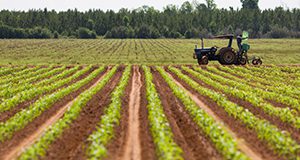
Nutrient applications are often required to meet Florida’s demand for agricultural and horticultural commodities, but often those applications occur in close proximity to water bodies. In order for scientists, policy makers, and citizens to make decisions regarding nutrient issues in Florida, it is important to first understand which markets contribute to Florida’s fertilizer consumption. This three-page fact sheet explains Florida’s fertilizer usage statistics. Written by T.W.Shaddox and published by the Environmental Horticulture Department.
http://edis.ifas.ufl.edu/ep541
Production Guidelines for Globe Artichoke in Florida
Globe artichoke (Cynara cardunculus L.) belongs to a genus of thistle-like plants in the sunflower (Asteracae) family and is cultivated for its flower buds. This four-page fact sheet discusses production guidelines for artichoke in Florida. Written by Shinsuke Agehara and published by the Horticultural Sciences Department.
http://edis.ifas.ufl.edu/hs1289
Management of Plant-Parasitic Nematodes in Florida Field Corn Production
This 8-page fact sheet written by Zane J. Grabau and Christopher Vann and published by the Department of Entomology and Nematology explains how corn producers can spot nematode symptoms, sample for nematodes, and manage nematode problems.
http://edis.ifas.ufl.edu/ng014
Xylella fastidiosa and Olive Quick Decline: Symptoms and Identification of an Insect Vectored Pathogen
A plant disease called Olive Quick Decline is killing olive trees throughout southern Italy. Although the pathogen that causes the disease is not known in Florida, it may spread to the state, which means that olive producers and homeowners with olives must watch for symptoms of the disease as well as for the leafhopper insects that spread it. This 3-page fact sheet written by Whitney Elmore and Jennifer L. Gillett-Kaufman and published by the Department of Entomology and Nematology explains how to monitor for the disease and its insect vectors and offers advice and assistance for commercial and hobby olive growers.
http://edis.ifas.ufl.edu/in1165
Management of Plant-Parasitic Nematodes in Florida Cotton Production
This 8-page fact sheet written by Zane J. Grabau and published in January 2017 by the UF Department of Entomology and Nematology explains how to diagnose and manage nematode problems in cotton production.
http://edis.ifas.ufl.edu/ng015
Management of Plant-Parasitic Nematodes in Florida Soybean Production
This 8-page fact sheet written by Zane J. Grabau and published by the UF Department of Entomology and Nematology in January 2017 explains how to identify and manage a nematode issue in a soybean operation.
http://edis.ifas.ufl.edu/ng018
Using Dicamba in Dicamba-Tolerant Crops
After many years in development, dicamba will likely be fully approved for use in tolerant cotton varieties for the 2017 growing season. There is great concern that dicamba drift can result in significant losses in nearby sensitive crops. This concern is well-founded because many crops (such as soybean, snap bean, and peanut) are highly sensitive to extremely low doses of dicamba. All precautions must be followed if these new dicamba formulations are to be used. This 3-page fact sheet discusses herbicide selection, discontinued use of ammonium sulfate, nozzle selection, boom height, and wind speed. It also addresses a few frequently asked questions. Written by J. Ferrell and R. Leon, and published by the UF Agronomy Department, February 2017.
http://edis.ifas.ufl.edu/ag414
Manejo de Insectos en Cruciferas (Cultivos de Coles) (Brocoli, Repollo, Coliflor, Col, Col Rizada, Mostaza, Rabano, Nabos)
Los vegetales conocidos como crucíferas son un grupo de cultivos amplio y cada vez más importante en Florida. Un número de insectos se alimenta exclusivamente de crucíferas y afecta todos los cultivos enlistados en el título.
This thirty-page fact sheet is the Spanish translation of IG150: Insect Management for Crucifers (Cole Crops). Written by S.E. Webb, A. Nino, y H.A. Smith and published by the Entomology and Nematology Department.
http://edis.ifas.ufl.edu/ig168
Fumigant and Non-Fumigant Nematicides Labeled for Agronomic Crops in Florida
Plant-parasitic nematodes can cause severe yield loss of agronomic crops in Florida. Chemical products for managing plant-parasitic nematodes are called nematicides. This three-page facts heet describes the nematicides registered for use in Florida. Written by Zane Grabau and published by the Department of Entomology and Nematology.
http://edis.ifas.ufl.edu/in1152
Insect and Mite Integrated Pest Management in Florida Cotton
Insect and mite pests of cotton feed on cotton roots, leaves, stems, and fruit and reduce plant health and productivity, and, subsequently, cotton crop yields. These pests hide in different places on or within the plant or field, which makes them difficult to find and identify and costly to manage. The purpose of this 14-page guide written by Joseph Funderburk, Nicole Casuso, Norman Leppla, and Michael Donahoe and published by the Department of Entomology and Nematology is to provide Florida cotton growers a selected set of options for integrated pest management of insects and mites in cotton fields. It serves as a reference for cultural, mechanical, biological, and chemical control of arthropods. The guide includes links to additional UF/IFAS EDIS articles, as well as external sources of information on arthropod management. The guide also contains a searchable table of registered insecticides, herbicides, and fungicides for Florida cotton.
edis.ifas.ufl.edu/in1111
Sugarcane Cultivars Descriptive Fact Sheet: CP 96-1252, CP 01-1372, and CP 00-1101
Sugarcane cultivars CP 96-1252, CP 01-1372, and CP 00-1101 are the top three commercial sugarcane cultivars in Florida, occupying more than 43% of total sugarcane area. These cultivars are developed through the cooperative agreement among the United States Department of Agriculture (USDA), Canal Point, the UF/IFAS Everglades Research and Education Center in Belle Glade, and the Florida Sugar Cane League. This 4-page fact sheet provides information on the cultivars, their parentage, flowering, cold tolerance, yields, disease response, and major growth or yield issues. Written by Hardev Sandhu and Wayne Davidson, and published by the UF Agronomy Department, December 2016.
http://edis.ifas.ufl.edu/sc102
Establishment and Production Costs for Southern Highbush Blueberry Orchards in Florida: Enterprise Budget and Profitability Analysis
The United States is the world’s largest producer of blueberries. Florida’s blueberry production represents a small fraction of total US production, but blueberries are nevertheless an important and valuable crop in the state because Florida growers benefit from the nation’s earliest market window. In fact, the average price for blueberries received by growers in Florida during the last three years was 2.5 times the US average.
This 15-page fact sheet written by Ariel Singerman, Marina Burani-Arouca, Jeffrey G. Williamson, and Gary K. England, and published by the UF Department of Food and Resource Economics provides a summary of the enterprise budget developed for highbush blueberry production in Florida. The budget represents a typical operation and serves as an economic benchmark for growers, providing estimates of expenses and potential estimates of revenue and profit for a blueberry crop to help current and potential blueberry growers make informed decisions about blueberry production.
http://edis.ifas.ufl.edu/fe1002
DNA, Technology, and Florida Strawberries
Are Florida strawberries genetically engineered? The answer is no. No genetically engineered strawberry has been commercialized anywhere in the world. The UF/IFAS strawberry breeding program has been developing strawberry varieties for nearly 70 years, but these varieties are developed using a conventional breeding process of crossing and selection. This three-page fact sheet describes that process in greater detail. Written by Seonghee Lee, Young-Hee Noh, Sujeet Verma, and Vance M. Whitaker and published by the Horticultural Sciences Department.
http://edis.ifas.ufl.edu/hs1287
Also see the UF/IFAS press release (12/14): UF/IFAS scientists: Commercially grown strawberries are not genetically engineered
University of Florida Potato Variety Spotlight: Snowden
This five-page fact sheet describes a new University of Florida potato variety named Snowden. ‘Snowden’ is a potato variety that is commonly grown for the potato chip market. It was named and released in 1990 from the University of Wisconsin’s Lelah Starks Potato Breeding Farm in Rhinelander, WI. Tuber production and quality results provided in this spotlight are summarized from various variety trials conducted by the University of Florida’s Hastings Agricultural and Extension Center from 1998 to 2015. Written by Rodrick Z. Mwatuwa, Christian T. Christensen, and Lincoln Zotarelli and published by the Horticultural Sciences Department.
http://edis.ifas.ufl.edu/hs1286
Methods to Evaluate Peanut Maturity for Optimal Seed Quality and Yield
Determining when to dig is one of the most important economic decisions a grower must make. Peanut (Arachis hypogaea L.) poses a unique challenge for maturity determination because it is an indeterminate crop that forms pods underground. This 8-page fact sheet discusses maturity assessment methods as well as steps for collecting and evaluating a maturity sample. Written by Ethan Carter, Patrick Troy, Diane Rowland, Barry Tillman, Keith Wynn, Krystel Pierre, and Michael Mulvaney, and published by the UF Agronomy Department, September 2016.
http://edis.ifas.ufl.edu/ag411
